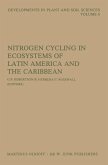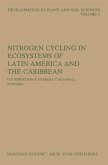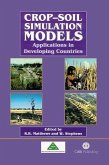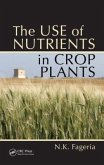Large quantities of nitrogen fertilizer are often applied to grassland with the aim of increasing the production of milk and meat from ruminant livestock. However, less than 25% of the fertilizer N is actually converted into animal protein. The remainder is subject to a variety of transformations in the soil, either before or after its uptake by the grass and consumption of the grass by livestock. Some of these transformations cause loss of N from the soil-plant-animal system, and result in some degree of pollution and potential harm in the wider environment. In this book the published information on the various transformations of N in temperate grassland systems is comprehensively reviewed. The effects of soil, weather and management factors are discussed and considerable emphasis is placed on soil-plant-animal interactions. The book also discusses the factors that influence the response of grassland to the application of fertilizer N, and how the optimum rate of application may be determined. In addition, N balances are described for different grassland systems, showing how annual inputs and outputs vary greatly depending on sward type and management. Overall, the book presents a valuable review of grassland nitrogen in temperate regions for advisers, researchers, teachers and students in plant and animal agriculture and environmental science.








